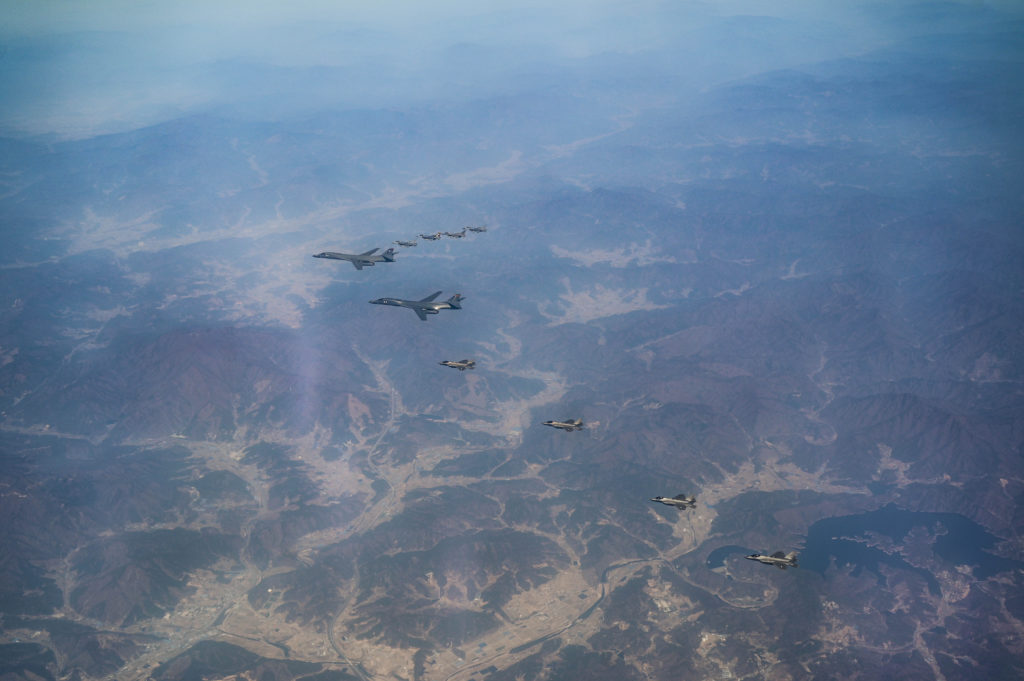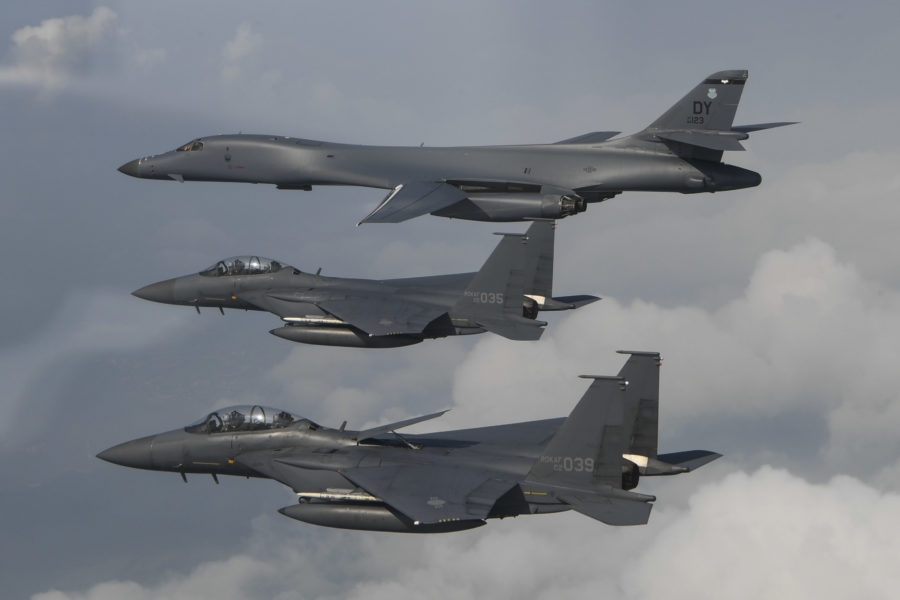Two B-1 Lancers from Dyess Air Force Base, Texas, led a simulated close air support exercise with South Korean fighters to maintain “defensive readiness” for both nations last week.
The long-range bombers flew to Korea and back for the one-day training event on Oct. 1 and have returned to Texas, a spokesperson for the Air Force Global Strike Command told Air & Space Forces Magazine.
The Lancers trained with two Republic of Korea F-15Ks, with support from U.S. Airmen from the 607th Air Support Operations Group at Pilsung Range, located about 160 miles east of Osan Air Base.
Following the exercise, one of the bombers joined a flyover with two ROK F-15Ks as part of the nation’s “Armed Forces Day” celebration over Seoul Air Base, located just outside the capital city of Seoul. The event reinforced the U.S.’s commitment to the two countries’ alliance, and “further enhanced the ability of ROK fighters to integrate with U.S. bombers,” Indo-Pacific Command stated in a release.
 The Republic of Korea and U.S. conduct a combined aerial exercise in conjunction with the deployment of U.S. B-1B strategic bombers over the Republic of Korea, March 19, 2023. U.S. Air Force photo by 1st Lt. Cameron Silver
The Republic of Korea and U.S. conduct a combined aerial exercise in conjunction with the deployment of U.S. B-1B strategic bombers over the Republic of Korea, March 19, 2023. U.S. Air Force photo by 1st Lt. Cameron Silver
The Boeing F-15K Slam Eagle, primarily built and operated by the ROK Air Force, is an advanced variant of the F-15E.
Close Air Support (CAS) provides essential airborne attacks against hostile targets that are close to friendly forces. Last week’s exercise marked the second time the long-range bombers have partnered with ROK fighters for CAS training this year. In June, a B-1 bomber conducted its first live munitions drop over the country in seven years, collaborating with two ROK F-15Ks to release 500-pound GBU-38 Joint Direct Attack Munitions (JDAM). Earlier this year, the Air Force also engaged the Lancers in CAS training alongside Swedish JAS 39 Gripen fighters, aimed at strengthening partnerships and boosting operational readiness.
As the mission hinges on accuracy, traditionally, low-flying aircraft like the A-10s have been used for CAS training, utilizing the attack aircraft’s 30mm cannons. Although bombers are not primarily built for this role, all three USAF types—B-1, B-2, and B-52—can conduct CAS missions.
CAS has been a primary mission of the B-1 in support of combatant commanders for more than two decades. In previous demonstrations, B-1 Lancers showcased their ability to perform a low-level, high-speed pass as a non-lethal “show of force,” signaling readiness to engage the enemy if necessary. The training emphasizes this type of support to protect ground troops in real-world combat situations. The Lancers carry the largest conventional payload of weapons in the U.S. military, including general-purpose bombs, cluster munitions, and laser-guided missiles.


